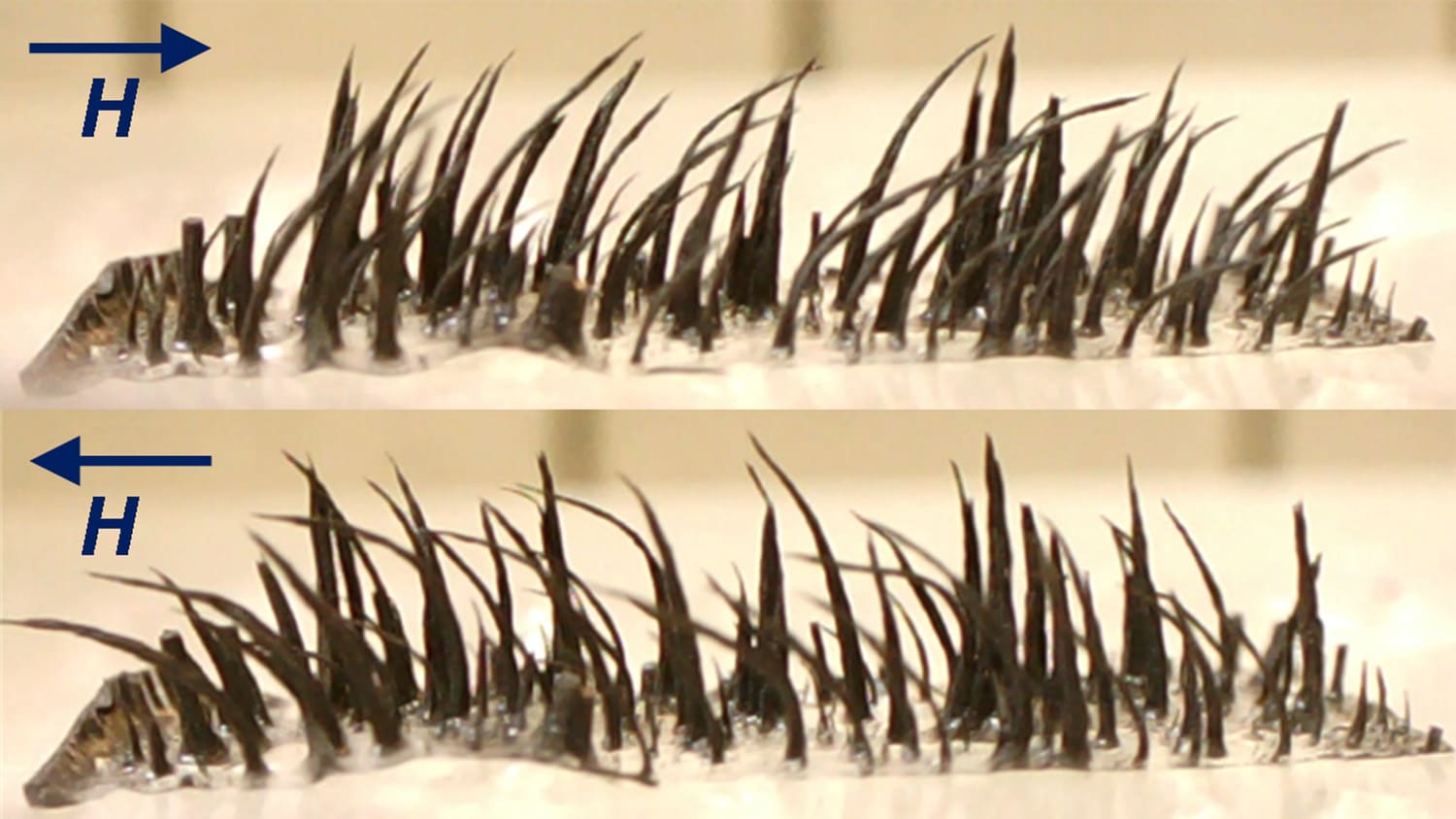Moth-Inspired Nanostructures Take the Color Out of Thin Films
Inspired by the structure of moth eyes, researchers at North Carolina State University have developed nanostructures that limit reflection at the interfaces where two thin films meet, suppressing the “thin-film interference” phenomenon commonly observed in nature. This can potentially improve the efficiency of thin-film solar cells and other optoelectronic devices.
Thin-film interference occurs when a thin film of one substance lies on top of a second substance. For example, thin-film interference is what causes the rainbow sheen we see when there is gasoline in a puddle of water.

Gasoline is transparent, but some light is still reflected off of its surface. Similarly, some of the light that passes through the gasoline is reflected off the underlying surface of the water where the two substances interface, or meet. Because the light reflected off the water has to pass back through the gasoline, it takes a slightly different optical path than the light that was reflected off the surface of the gasoline. The mismatch of these optical path “lengths” is what creates the rainbow sheen – and that phenomenon is thin-film interference.
Thin-film interference is a problem for devices that use multiple layers of thin films, like thin-film solar cells, because it means that some wavelengths of light are being reflected – or “lost” – at every film interface. The more thin films a device has, the more interfaces there are, and the more light is lost.
“We were inspired by the surface structure of a moth’s eye, which has evolved so that it doesn’t reflect light,” says Dr. Chih-Hao Chang, an assistant professor of mechanical and aerospace engineering at NC State and co-author of a paper on the research. “By mimicking that concept, we’ve developed a nanostructure that significantly minimizes thin-film interference.”
The nanostructures are built into thin films that will have a second thin film placed on top of them. The nanostructures are an extension of the thin film beneath them, and resemble a tightly-packed forest of thin cones. These nanostructures are “interfacial,” penetrating into whatever thin film is layered on top of them – and limiting the amount of light reflected at that interface. Chang’s team found that the an interface featuring the interfacial nanostructures reflects 100 times less light than an interface of thin films without the nanostructures.
“Our next steps are to design a solar device that takes advantage of this concept and to determine how we can scale it up for commercial applications,” Chang says.
The paper, “Antireflection Effects at Nanostructured Material Interfaces and the Suppression of Thin-Film Interference,” was published online May 15 in the journal Nanotechnology. Lead author of the paper is former NC State graduate student Qiaoyin Yang. Co-authors are Chang and NC State Ph.D. students Xu A. Zhang, Abhijeet Bagal and Wei Guo. The research was supported by a NASA Early Career Faculty Award and the National Science Foundation’s ASSIST Engineering Research Center at NC State.
-shipman-
Note to Editors: The study abstract follows.
“Antireflection Effects at Nanostructured Material Interfaces and the Suppression of Thin-Film Interference”
Authors: Qiaoyin Yang, Xu A. Zhang, Abhijeet Bagal, Wei Guo and Chih-Hao Chang, North Carolina State University
Published: May 16, Nanotechnology
DOI: 10.1088/0957-4484/24/23/235202
Abstract: Thin-film interference is a well-known effect, and it is commonly observed in the colored appearance of many natural phenomena. Caused by the interference of light reflections from the interfaces of thin material layers, such interference effects can lead to wavelength and angle-selective behavior in thin-film devices. In this work, we describe the use of interfacial nanostructures to eliminate interference effects in thin films. Using the same principle inspired by the moth-eye structures, this approach creates an effective medium where the index is gradually varying between the neighboring materials. We present the fabrication process for such nanostructures at a polymer-silicon interface, and experimentally demonstrate its effectiveness in suppressing thin-film interference. The principle demonstrated in this work can lead to enhanced efficiency and reduce wavelength/angle sensitivity in multilayer optoelectronic devices.
- Categories:


